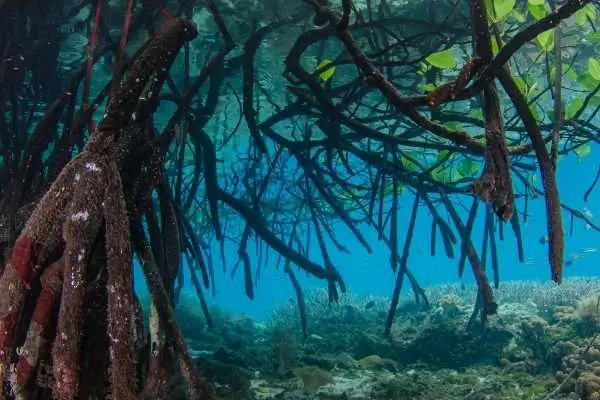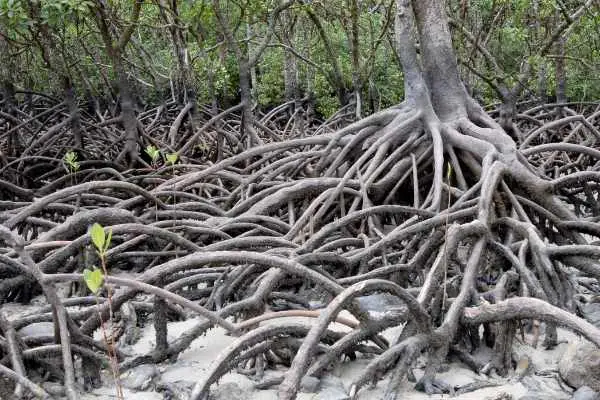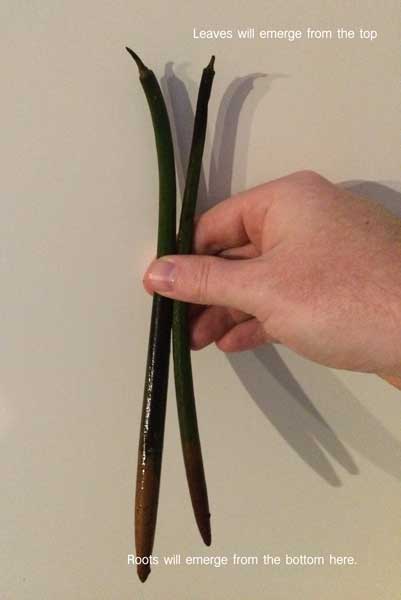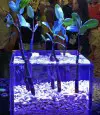If you’ve ventured into a tropical region of the globe, odds are you’ve encountered mangroves along shorelines. These staples of the brackish water community are impossible to miss. And they’re important parts of the saltwater fish ecosystem. Plenty of species use them as nurseries – even some of the larger sharks out there. The various trees represent the health of the system. But have you ever considered bringing mangroves into your saltwater reef tank? If you haven’t, it’s time you DID!
Table of Contents: Mangroves in Reef Tanks
Obviously, you’re not looking to grow massive, sweeping mangrove trees. (At least, I’m guessing you’re not – unless you have an epic aquarium space) Or maybe you never considered the possibility of adding these flexible plants into your reef tank. Either way, the links below will allow you to explore a fresh concept for the hobby.
- What Are Mangroves?
- Why Add Mangroves to Reef Tanks?
- Caring for Mangroves
- Personal Notes
- For More Information
What Are Mangroves?
Mangroves are trees that grow along coastal regions in tropical and subtropical geographies. You’ll find over 80 species – all thriving in conditions with poor oxygen in the soil. In the U.S., I always think of Florida as being a haven for mangroves. But mangrove forests cover more than 50,000 square miles across 118 countries globally. And if you want to find the largest coverage of mangroves, you need to travel to Indonesia. They have 23,000 SQUARE KILOMETERS!
A dense cluster of mangroves within the subtidal range is referred to as a mangrove forest. The trees and shrubs grow along the edge of the water, their prop roots packed close together. The stilt-like projects keep the trees safe when the tides roll in and out. And the tangle created helps trap sand floating in with the current, building up the bottom where the forest resides. It actually stabilizes the coastline, protecting the inland regions from storms.
But since space is limited in these areas, you see a gnarled mess of arching projections, fighting to reach the saltwater.

You read that right – saltwater. Mangroves don’t require saltwater to thrive (saltwater and terrestrial plants don’t usually play well together), but these species ARE salt-tolerant. This means they can grow in freshwater, brackish, or saltwater. Mangroves adapted to life along the coast by filtering the salt from saltwater and excreting it through their leaves. It’s a natural byproduct of their photosynthesis. (If you bite down on their waxy leaves, they’re salty)
In addition to shoring up barrier regions from tidal surges, the roots of mangroves serve as nurseries for juvenile fish. Don a snorkel and mask, and you’ll see a HUGE variety of species swimming and hiding among the roots. Mangrove forests protect these vulnerable fish from predators that can’t navigate the tangle of prop roots. They’re key to the tropical ecosystem.
Why Add Mangroves To Reef Tanks?
Clearly, mangroves play a critical role in the world’s environmental health. And that’s always important to discuss. But why bring them up on a site that handles saltwater aquariums? Easy – because you can incorporate these unique trees into your reef tank! Their ability to tolerate and even thrive in saltwater conditions means the average aquarium won’t pose a problem for their health. But why else would you want to take the time to cultivate mangroves?
Aesthetics
First, the most important reason to keep mangroves in your reef tank is that you like their look. No other plant species have the same waxy, oval-shaped leaves or spreading prop roots that you get – regardless of which species you choose. And while you’re not going to grow your tree to the maximum height of 40 feet (10m), you’ll find plenty of smaller varieties that work well in a hobby setting.
Think about it: what looks cooler than your c olorful fish darting in and out around the root structures of a mangrove – the branches stretching out through the top? You’ll have a natural look within your home – with minimal effort.

Natural and Living Structures For Your Fish
Mangroves grow in tropical and subtropical regions and act as nurseries for juvenile fish. The tangled network of prop roots extending through the water and into the sediment creates a natural hiding structure for the fish and provides protection from predators. In a reef or lagoon aquarium, growing your own mangroves do the same, supplementing the live rock in your display.
At the same time, you’ll provide a healthy environment for your fish to lay their eggs. It’s a win-win situation!
Nutrient Export
Another reason to keep mangroves in an aquarium is for nutrient exportation. Mangroves – like the algae you keep in a refugium – help purify the water by removing some of the natural waste products produced by the animals. While they offer that crucial stabilization in the wild, anchoring shorelines by capturing and funneling sediment to the bottom, they also act as filters and remove excess wastes that fuel problem algae outbreaks.
Now, you don’t need to worry about shore erosion in your reef tank. But who DOESN’T need some assistance in keeping up with cleaning? Plants naturally filter out nitrogen products. And with the branches extending above the surface, they’ll “exhale” the nitrogen bubbles into the air. You’ll find it MUCH easier to keep up with your tank cycling.

Caring For Mangroves
You probably imagine plenty of extra work, introducing mangroves into your reef tank. But they’re not as complicated as you’re thinking. After all, they exist in the turbulent tidal region along the coast where water conditions change CONSTANTLY. They’re hardy plants built to withstand storms. Since you don’t schedule hurricanes for your aquarium (hopefully you don’t, anyway), you probably already have everything you need to get your mangroves settled into your tank.
Planting
If you have a shallow tank, consider planting your mangrove propagules (the thin green shoots) directly into the soil. They’ll anchor themselves into the substrate and take it from there. (Not so different than planting a posy in a pot)
For a larger tank, you’ll have the room to recreate the look created by the tangled, knobby prop roots. Suspend the mangrove propagule in the water column with a fishing line, so the base stays submerged while the rest of the shoot extends out of the water. The roots will grow down and work their way into the substrate. Once the tree’s stable, you can remove the fishing line.

Light
Mangroves are trees. Yes, they’re nifty salt-tolerant plants, but plants nonetheless. That means they require light for photosynthesis. If your room receives strong sunlight from nearby windows, that may be sufficient to keep your mangroves healthy and growing. Otherwise, you will need to house them under the aquarium lights for your display tank or refugium. Just ensure you leave plenty of room for the branches to grow without hitting the housing.
Water
Mangrove prop roots will grow in the saltwater. You don’t need to adjust your mixture for the tree’s needs, either. They’re hardy species designed to cope with fluctuations in the salinity of the regions where they grow. As long as the roots remain submerged, they shouldn’t require additional watering, either, with one exception (which I’ll get to in a second).
Maintenance
The way mangroves “cope” with the salt in salt water is to export it through their leaves. According to Reefkeeping Magazine, you should clean the accumulated salt from the leaves a few times each week. This is as easy as spraying the leaves with fresh water (assuming it’s safe to do so and you don’t have electrical equipment in the vicinity). This mimics the natural rainfall that occurs around the equator.
If you forget to “wash” your mangroves, the salt can crust over the leaves. This will interfere with their ability to carry out photosynthesis, and the tree will die. The quick mist shouldn’t get too difficult to fold into your routine maintenance schedule.

Personal Notes
I recently started the journey of keeping mangroves in my reef tank. And I can’t wait to share my progress (and mistakes) with you here.
The roots emerged from the first propagule ~9 days after bringing them home. I’ve yet to see any roots on the second, smaller shoot. That’s not all that surprising, though. I suspect the larger propagule is healthier overall and may prove to be a faster grower.
Neither propagule has demonstrated leaf or branch growth yet.

For More Information
Everyone loves their reef tanks. But why not go an extra step and incorporate mangroves into your design? These hardy trees tolerate saltwater without a problem, and your fish will LOVE the natural tank decor. They’re also a cinch to grow, as this YouTube video will explain:
If you’re still interested in looking for information about setting up mangroves in a reef tank, you’ll find plenty of helpful information below:

Leave a Reply